Overview
- Features: Artifacts showcasing culture and heritage of Kerala
- Opening Times: 10:00 am to 5:30 pm, daily
- Best Time to Visit: Any time of the year
- Duration: 2 to 3 hours
- Travelled By: Bus, auto rickshaw
- Cost: Rs 200
- Address: Pandit Karuppan Road, Santhi Nagar, Thevara, Kochi, Kerala, India
- Type: Museum
Author Reviews[display_rating_item_results rating_form_id=”2″ rating_entry_ids=”1″ show_category_filter=”false” show_options=”true” result_type=”star_rating” preserve_max_rating=”true” show_title=”false” show_count=”false” ]
Total Rating: [display_rating_result rating_form_id=”2″ show_count=”false” show_rich_snippets=true] [accordions load=”1″] [accordion title=”User Reviews” last] [display_rating_item_results rating_form_id=”5″ show_options=”true” result_type=”star_rating” preserve_max_rating=”true” show_title=”false” show_count=”true” show_rich_snippets=true] [/accordion] [accordion title=”Add Review”][display_rating_form show_email_input=”true” show_comment_textarea=”true” show_name_input=”true” rating_form_id=”5″] [/accordion] [/accordions]
Summary
Located on the southeast outskirts of Ernakulum, Kerala Folklore Museum is a treasure trove that showcases the rich heritage of Kerala through its numerous art and dance forms. Collected over thirty years by its owner, George Thaliath, an antique dealer, the collection includes over 5000 artifacts showcased in a private museum created from ancient temples and beautiful old houses.
Highlights of Kerala Folklore Museum Kochi
Step into this three-storied museum and take a stroll down history where every piece of art that you encounter is scented with times gone by and steeped in a strong sense of culture and heritage. This is Kerala Folklore Museum at Thevara, Ernakulam – a unique not-for-profit venture to preserve the splendid folklore wealth of Kerala.
Opened in 2009 as a non-profit organization, the museum is truly a treasure trove that showcases the rich heritage that Kerala exudes through its numerous art and dance forms. Artifacts that bear the scent of bygone era like masks and sculptures, in wood, stone and bronze, costumes of traditional and ritual art forms, musical instruments, traditional jewellery, manuscripts of rare medicinal and astrological secrets, and Stone Age utensils are all preserved in this museum with utmost care.
History of Kerala Folklore Museum Kochi
[singlepic id=1167 w=720 h=560 float=center]
It’s a private museum created from ancient temples and beautiful old houses collected by its owner, George Thaliath, an antique dealer, over 25 years. The museum was constructed over a period of seven years with 60 skilled carpenters, wood sculpturists and mural artists. This architectural marvel was completed by using 25 antique and heritage structures from the 17th to early 20th centuries. It includes over 5000 artifacts and covers three architectural styles of Kerala: Malabar on the ground floor, Kochi (Cochin) on the 1st, Travancore on the 2nd.
Architecture of Kerala Folklore Museum Kochi
[singlepic id=1159 w=720 h=560 float=center]
The entrance to this marvellous structure is constructed from the remnants of a 16th century temple in Tamil Nadu and wooden carvings collected from across Kerala. The entrance door is decked with an attractive manichitratazhu (a traditional ornate door lock of Kerala). Next to the entrance door are pierced wooden windows, reminiscent of the intriguing Malabar style of architecture.
[singlepic id=1156 w=720 h=560 float=center]
The museum has been built on the model of a Malabar mansion, a style of architecture which prevailed in the Malabar region, in the north of Kerala. It is a rare blend of teak, rose wood and metal. Wood was extensively used in the super structure for the construction of ceilings and roofs. The ceiling incorporates metallic ornamental buds. The Arabic tradition of simplicity of plan has combined with the indigenous construction techniques giving rise to a unique style of Islamic architecture not found anywhere else in the world.
Exquisitely carved wooden ceilings are supported on massive wooden beams with carved figures. The ceiling is embellished with brass hemispherical objects, a feature of Malabar style of architecture. Antique ceiling fans and quaint western style electric lamps decorate the ceiling. Pierced wooden windows, a specialty of Malabar style of architecture enhance the walls of this museum. The floor is made of wooden tiles. Lavish use of quality wood bears testimony to the availability of wood in abundance in Malabar in the olden days. Massive wooden pillars display figures from Hindu classical mythology.
[singlepic id=1157 w=720 h=560 float=center]
Highlights of Kerala Folklore Museum – Ground Floor
[singlepic id=1171 w=720 h=560 float=center]
On the ground floor there are 3000-year-old burial urns ‘nannangadi’, in which people were buried in the foetal position, as well as musical instruments, ancient terracotta, Stone Age objects, jewellery and paintings. Noteworthy here are the ancient terracotta penis-shaped objects offered to the gods so that the women of that time would give birth to sons.
[singlepic id=1168 w=720 h=560 float=center]
Highlights of Kerala Folklore Museum – First Floor
[singlepic id=1161 w=720 h=560 float=center]
The first floor displays costumes of various traditional and ritual dance forms of Kerala like Theyyam, Kathakali, Ottanthullal, and Mohiniyattam. ‘Kanjadalam’ or lotus petal is the name given to the second floor, which is adorned with fascinating mural paintings and has a chiselled wooden ceiling made from 60 frames.
[singlepic id=1169 w=720 h=560 float=center]
This museum hall is decorated with a beautiful wooden door panel above the door frame which bears carvings representing jasmine buds. Kalithattu, the theatre for folk and ritual art, represents the Kochi style of architecture, a blend of Kerala and Western styles. The wooden ceiling comprises 392 columns each of them having beautiful carvings. The stage for presenting performing art forms is beautified with colourful pillars on both sides. Every showcase displays quaint costumes of performing arts. Here you can view a miniature replica of South India’s ethnic sculpture forms.
[singlepic id=1163 w=720 h=560 float=center]
Highlights of Kerala Folklore Museum – Second Floor
[singlepic id=1151 w=720 h=560 float=center]
The second floor has a beautiful wood-lined theatre, with a 17th-century wooden temple ceiling, where performances take place nightly. 333 wooden sculptures together with 253 mural paintings make the theatre an unforgettable visual experience for both classical and ritual art forms. The theatre here conducts authentic stage performances every evening from 6.30 to 8:00 pm. Classical and ritual art performances as well as martial art forms can be seen here in the evenings.
[singlepic id=1164 w=720 h=560 float=center]
On 11th November 2013, Kerala Folklore Museum was made famous due to a royal visit by Prince Charles and Princess Camilla Parker Bowles who were escorted around the museum by the owner, George Thaliath and his wife Mrs Annie George.
Transport to Kerala Folklore Museum Kochi
Located on the southeast outskirts of Ernakulum, this incredible museum is well worth the journey. The easiest and most efficient way to get here is to hop into an auto rickshaw. Buses ply to Thivara from Ernakulum and Fort Kochin however you will need to walk a long way or catch an auto rickshaw for the remainder of the way to Folklore Junction.
Tell us what you think. Are you interested in visiting Kerala Folklore Museum Kochi? If you’ve already been, please rate this attraction and let us know what you enjoyed most about it.
We love to hear from you so please leave your comments below.



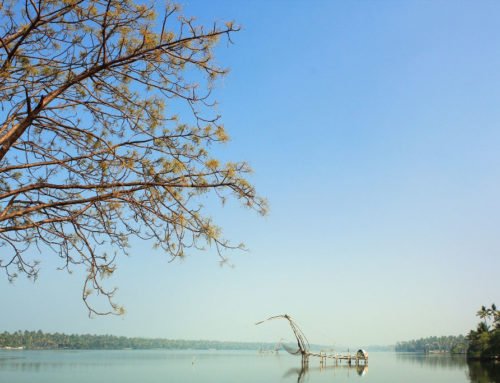
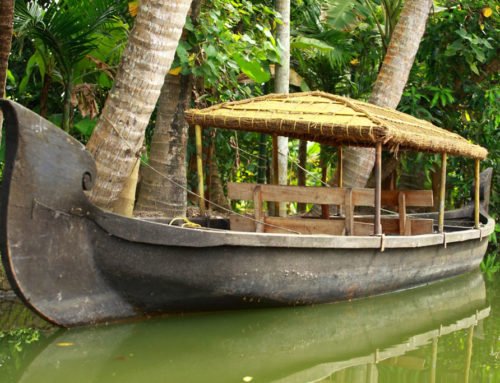
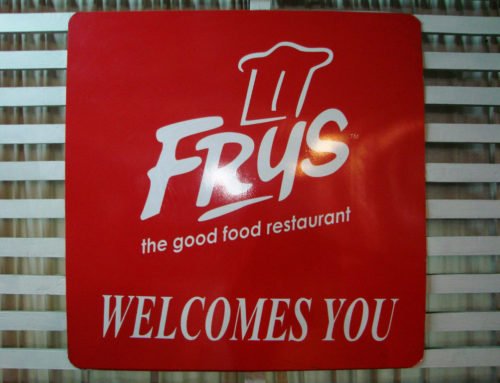
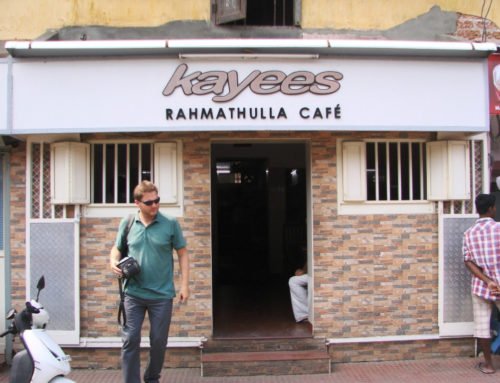
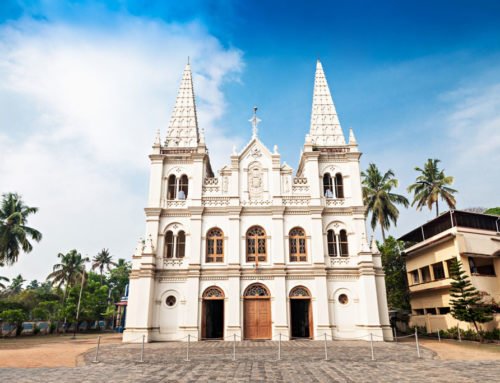
We visited the museum and really thankful to Mr. George for the great collections. Hats off to him for the deed. The collections were awesome & explored the things which we were not aware of. I would ask everyone visiting kochi should go to the museum or will definately miss something.